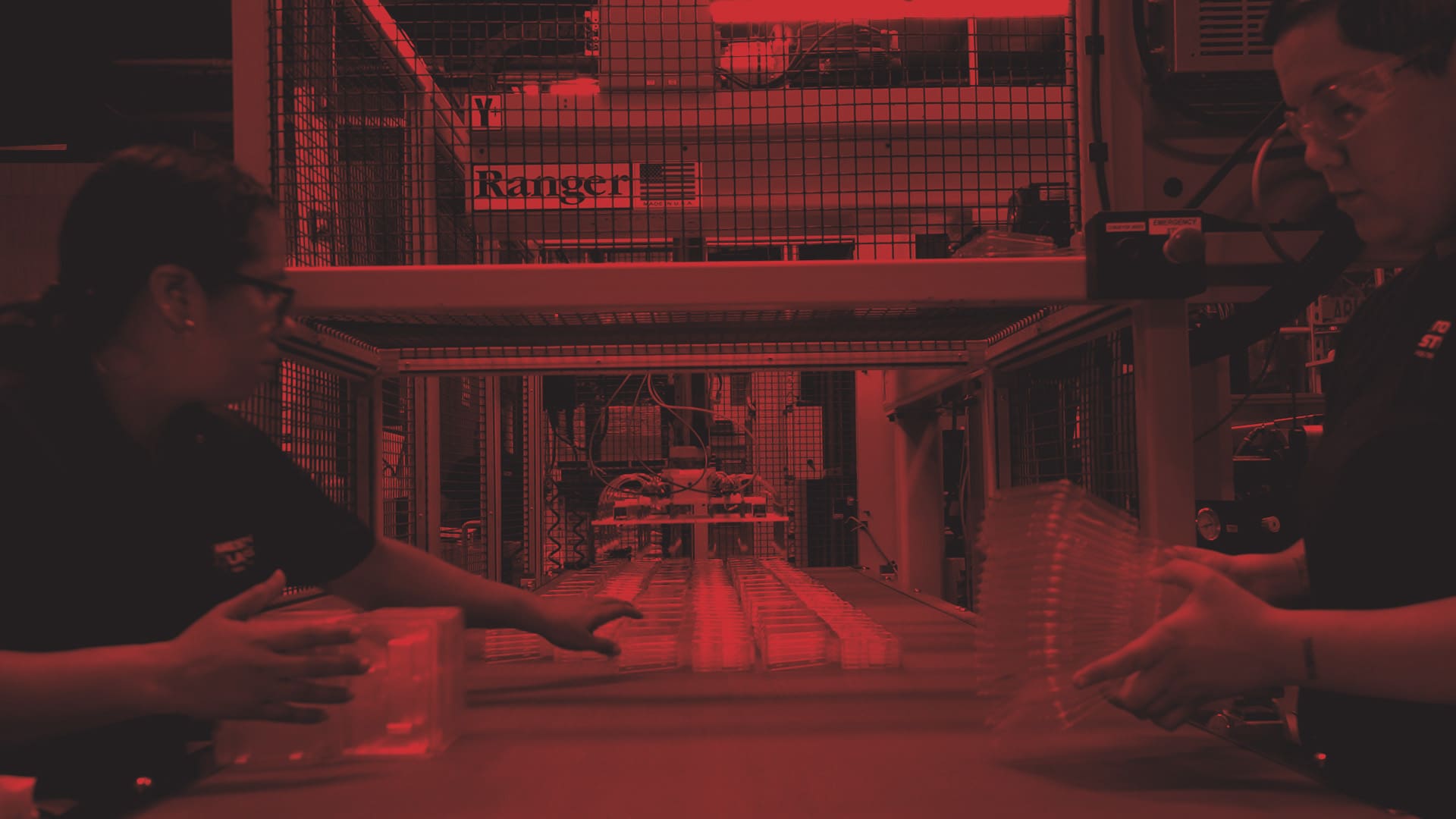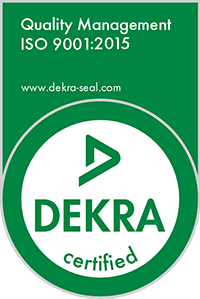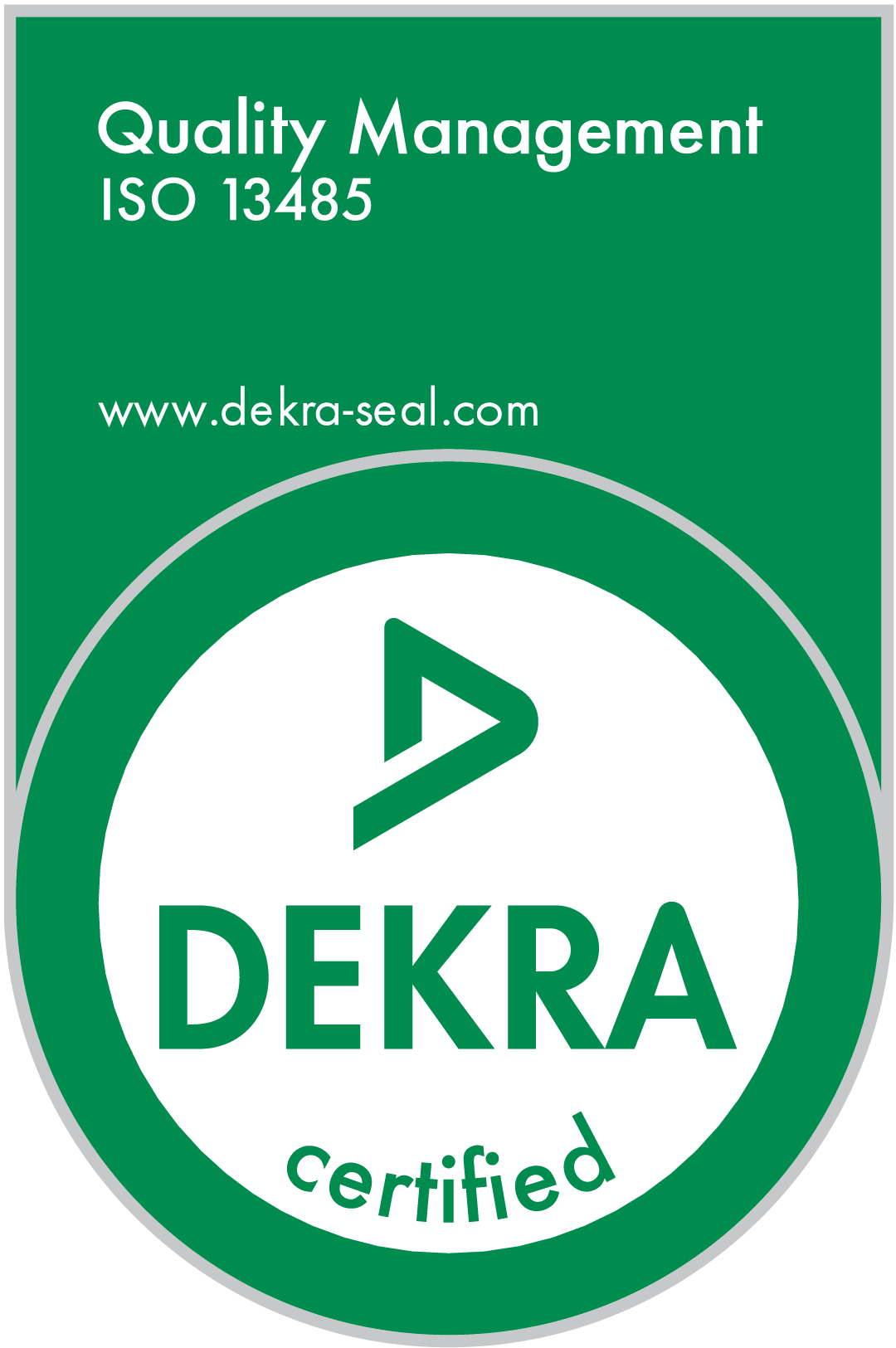Heavy Gauge Thermoforming
Heavy gauge thermoforming is a manufacturing process that involves heating a thick thermoplastic sheet until it becomes pliable. The sheet often ranges from 0.050” to 0.75” in thickness and can be made of various materials, including polycarbonate and acrylic. The process starts with a flat sheet of thermoplastic material loaded into a heating chamber and heated until it becomes soft. The softened sheet is then placed onto a mold or tool, which applies vacuum and/or pressure to form the plastic into the desired shape. Once the plastic has cooled and solidified, it is removed from the mold and trimmed to the final structure.
Advantages
Here are several benefits of utilizing heavy gauge thermoforming:
- Ability to produce less waste compared to injection molding or machining
- Capacity to make large, durable, and intricately shaped components
- Capacity to work with a variety of materials, such as high-temperature polymers and reinforced composites
- Ability to generate intricate geometry and detailed drawings
- Personalized surface finishes and hues
- Superior durability and impact resistance
- Comparatively low tooling costs to other manufacturing processes
Applications
Heavy gauge thermoforming is a versatile manufacturing process used in various applications across many industries. Its ability to produce large, complex, and durable parts with lower tooling costs makes it an attractive option for many applications, including the following:
- Aerospace components: interior and exterior parts for aircraft, including cockpit panels, cabin components, and outer covers
- Automotive parts: door panels, dashboards, exterior body panels, and interior trims
- Consumer products: electronics covers, appliances, toys, and recreational equipment
- Industrial equipment: enclosures and covers for industrial equipment such as air compressors, generators, and machinery
- Medical devices: protective covers, enclosures, and housings for medical devices like MRI machines, surgical equipment, and X-ray machines
Light Gauge Thermoforming
Light gauge thermoforming produces parts using thin plastic sheets typically ranging from 0.005” to 0.050” in thickness. Like heavy gauge thermoforming, it involves heating the plastic sheet until it is pliable enough to be shaped by the vacuum over or into a forming tool. The desired shape is formed and, once the part has cooled, excess plastic is trimmed away. It is a highly efficient and cost-effective process for producing large volumes of small to medium-sized parts with short lead times and lower tooling costs. In addition, the thin-gauge plastic used in the process is typically made from materials like polyethylene terephthalate (PET), polystyrene (PS), and polyvinyl chloride (PVC).
Advantages
The following are the advantages of light gauge thermoforming:
- High efficiency and cost-effectiveness for producing large volumes
- Wide range of customization options of parts for unique product dimensions and branding requirements
- Lightweight parts and products
- Short lead times and quick turnaround times
- Minimal material waste
Applications
The versatility of light gauge thermoforming allows it to produce plastic parts and products, such as trays, clamshells, lids, and blister packs. Here are other common applications of the process in various industries:
- Automotive parts: interior trim, door panels, and exterior appliques
- Consumer goods: packaging, toys / games, and household items such as storage containers and organizers
- Electronics: cases, covers, and enclosures for electronic devices such as smartphones, tablets, and laptops
- Food packaging: trays, cups, and containers
- Medical packaging: trays and containers for medical devices and supplies
Choose Jamestown Plastics for Premium Custom Plastic Products
At Jamestown Plastics, we take pride in consistently delivering superior plastic solutions that meet and exceed our customers’ expectations! Our commitment to quality, advanced equipment, and skilled team enables us to handle custom plastic projects with precision and efficiency. We have implemented an ISO 9001:2015 certified Quality Management System to ensure top-notch quality control from design to production. In addition, our in-house design and tooling capabilities allow us to maintain tight control over all projects, while reducing lead times. Whether you need heavy gauge or light gauge thermoforming, we can do it all! Contact us today to learn more about our services and solutions.





